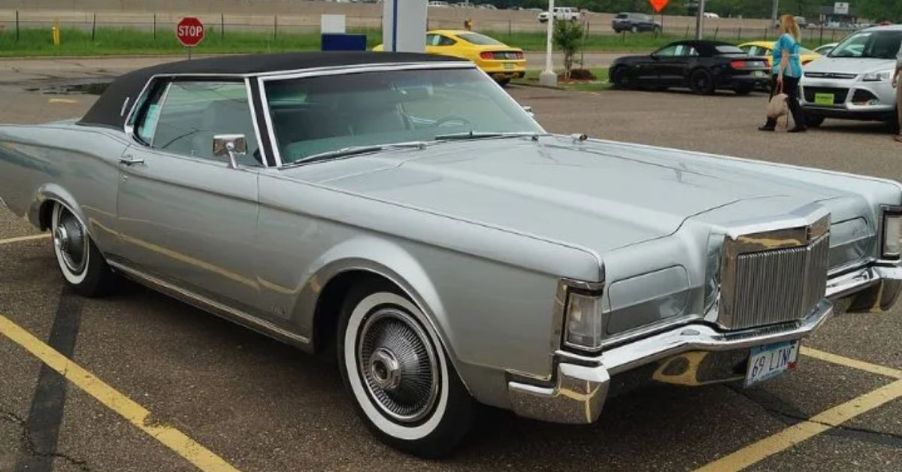
15 Muscle Cars That Lost Their Edge

Muscle cars once symbolized American power and rebellion, dominating the streets with incredible roaring engines and bold designs. However, many iconic models have since fallen out of favor due to several prevailing factors. Discover 15 muscle cars that lost their popularity and the possible reasons why.
1966 Dodge Charger

This was Dodge’s first fastback model. It debuted with a distinct design featuring hidden headlights, a sleek, sloping roofline, and a powerful 426 Hemi V8. However, despite its bold styling and performance capabilities, the 1966 Charger is less sought after today due to its heavy, full-size frame.
1975 Ferrari 365 GT4 BB

Known as the “Berlinetta Boxer,” the 1975 Ferrari 365 GT4 BB was Ferrari’s first mid-engined 12-cylinder road car. Despite a 4.4-liter flat-12 engine producing 360 horsepower, the vehicle has become less desirable due to its complex maintenance requirements and high cost of ownership.
1971 Lincoln Continental Mk III

Owing to its significant size and weight, the 1971 Lincoln Continental faced challenges in terms of its appeal and market reception. With a 460 cubic inch V8 engine producing 365 horsepower, the Mk III is still considered a rare powerhouse for that era.
1971 Chevrolet Impala

As the automotive industry shifted towards more fuel-efficient and technologically advanced vehicles, the bulky and heavy Impala became less appealing to some modern drivers. Nevertheless, the 1971 Impala remains notable for being the first model year to offer more aerodynamic styling.
1949 – 1954 Pontiac Chieftain

Most Pontiac Chieftains released from 1949 to 1954 featured a stylish mid-century American car. These versions are now overlooked mainly due to their perceived lack of standout features and relatively higher maintenance costs. Additionally, it lacks high-performance models or versions with unique historical significance.
1964 – 67 Sunbeam Tiger

The 1964–67 Sunbeam Tiger, a British roadster renowned for its powerful V8 engine derived from Ford, was once celebrated for its output and sporty look. However, its appeal has waned due to the unavailability of parts due to limited production and now-aging technology.
1952 – 1957 Lincoln Capri

Several Lincoln Capris released from 1952 to 1957 have fallen out of favor mainly due to their complex mechanics. Yet, they are considered advanced for that period because of their stylish design, powerful V8 engine, futuristic dashboard, and optional power windows.
1976 Dodge Aspen R/T

Featuring a 360 cubic-inch V8 engine, the Aspen R/T suffered from the era’s fuel crisis and tightening emissions regulations. Interestingly, the R/T was part of Dodge’s attempt to compete in the dynamic muscle car market of the 1970s.
1976-1989 Porsche 911 Carrera (Turbo 930)

Porsche 911 Carreras, especially the Turbo 930s produced from 1976 to 1989, offered impressive performance with their 3.0L and later 3.3L turbocharged flat-six engines. Nevertheless, their reputation has been affected by turbo lag, which some collectors find less refined.
1970 Plymouth Road Runner

The 1970 Plymouth Road Runner was known for its raw power and distinctive “Beep-Beep” horn. It featured different high-performance engines, including the 426 Hemi. However, as emissions regulations tightened and insurance costs soared in the mid-1970s, the Road Runner’s performance dwindled.
1972 Chevrolet Camaro

Featuring a range of engines, including a 5.7L V8 with 255 horsepower, the 1972 Camaro faced shifting emissions regulations and rising insurance costs. Despite its solid build and classic design, it lacked the performance and styling appeal seen in its predecessors and successors.
1971 Ford Torino Cobra

Ford’s 1971 Cobra was a high-performance variant of the Torino line. Originally designed to compete in the muscle car market, it featured a 375-horsepower 429 cubic-inch V8 engine. This car faced a fall in its appeal due to low production numbers and high insurance costs.
1974 AMC Javelin

Released in AMC’s muscle car era, the Javelin had a 5.9-liter V8 and a sporty and aggressive design to compete with other contemporary muscle cars. The oil crisis shifted consumer preferences towards more fuel-efficient vehicles, and the shrinking muscle car market led to poor sales.
1981 Dodge Charger

Dodge released the Charger in response to the growing emphasis on fuel efficiency. Sporting a 2.2-liter inline-four engine, it produced less than 100 horsepower, a significant drop from its performance-oriented predecessors. This shift in design and performance has contributed to the 1981 Charger’s declined attraction.
1980 Buick Skylark GS

The 1980 Buick Skylark GS was part of Buick’s compact car lineup. Introduced as a performance-oriented version of the Skylark, it came equipped with a 2.8-liter V6 engine delivering 110 horsepower. However, due to its reduced output, it failed to capture buyers’ interest.


